Sikkim is an Indian state located near the Himalayas. With a population of only 6, 13,000 inhabitants (census 2012), is the least populated state in India and the 2nd smallest state after Goa. Due to its unique location near the Himalayas, Sikkim is geographical diverse and the climate ranges between sub-tropical and high-alpine. The state boasts of its various cultural and natural resources and also has the only open land border between India and China. Sikkim is rich in cultural heritage and houses a multitude of different flora and fauna. The state is divided into 4 districts namely East Sikkim, West Sikkim, North Sikkim and South Sikkim. Due to its location near the Chinese border the place is mostly controlled by the Indian army and many areas require special permits if one wants to visit them.
1. Pemayangtse Monastery
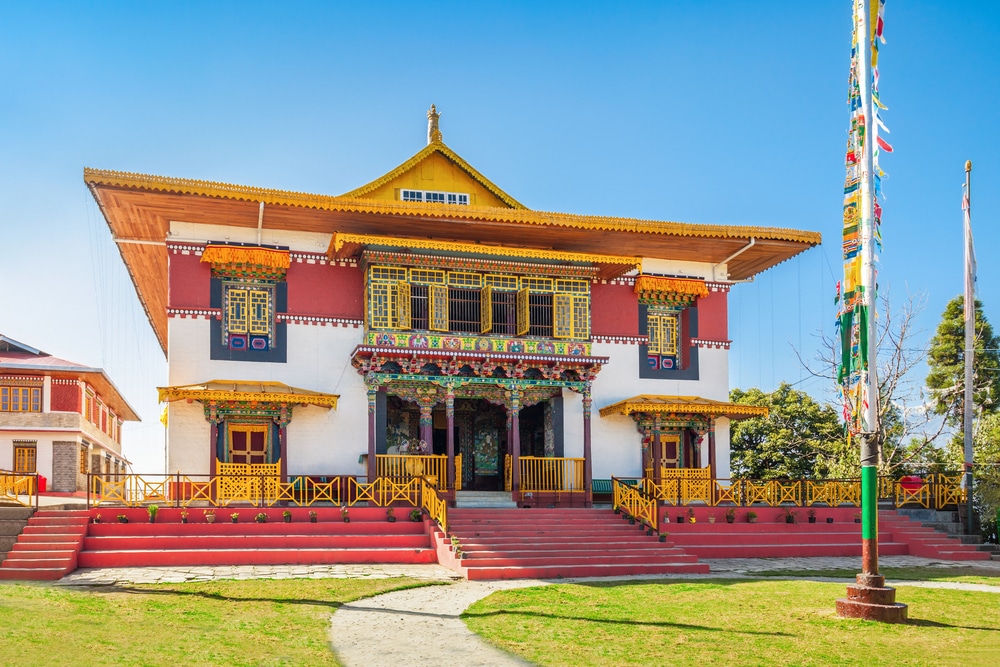
Located around 140 kilometres west from Gangtok, Sikkim, the monastery was founded in 1705 by Lama Lhatsun Chempo, and is one of the oldest monasteries in Sikkim. Pemayangtse Monastery was built for “pure monks” (ta-tshang) meaning “monks of pure Tibetan lineage”, celibate and without any physical abnormality. This practice is still retained. Only the monks of Pemayangtse Monastery are entitled to the title “ta-tshang”.
2. Kanchendzonga National Park
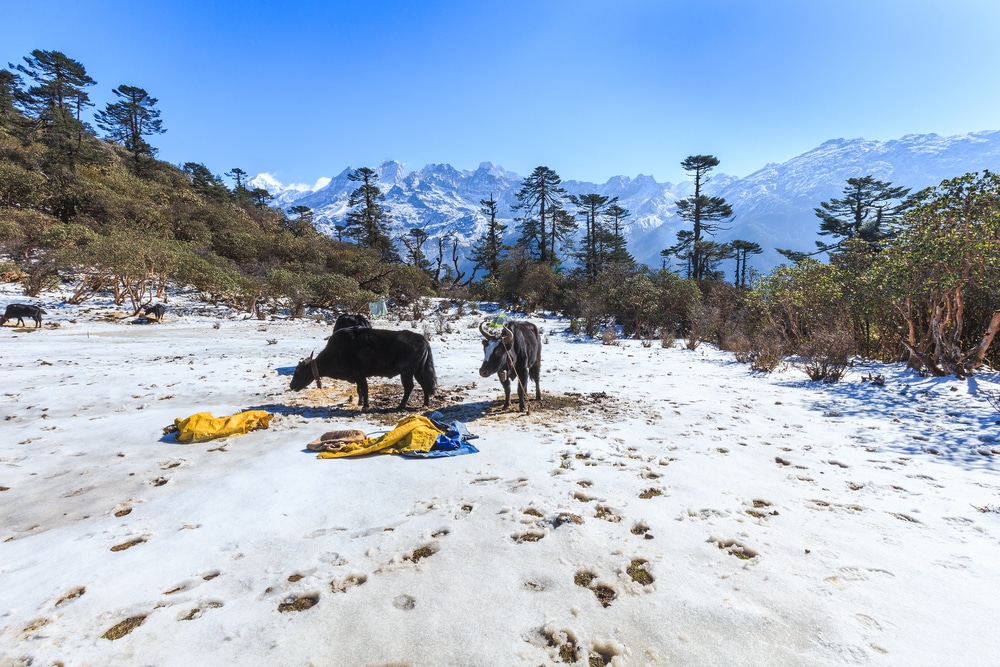
Covering an area of around 849.5 km2 and located at an elevation of 1,829 meters to 8,550 metres, Kanchendzonga National Park is also a Biosphere reserve and one of the few high altitude national parks in India. The park is covered with vegetation that includes temperate broadleaf and mixed forests consisting of oaks, fir, birch, maple, willow etc. The vegetation of the park also includes alpine grasses and shrubs at higher altitudes along with many medicinal plants and herbs.
3. Nathu La Pass
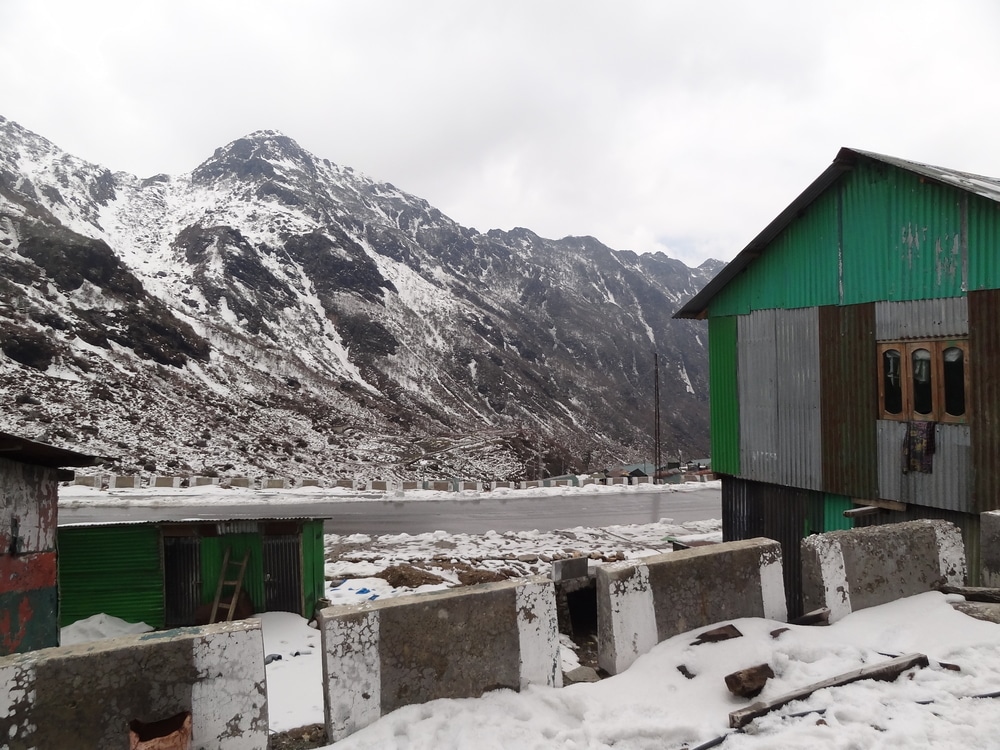
Nathu La Pass is situated at an elevation of 4,310 meters above sea level, and is an offshoot of the old silk route. The flow of tourists is regulated by the government of India as the soil here is shallow and prone to landslides, nevertheless, this is a must visit site as the location is a Hiker’s haven, as it offers picturesque views of the valley. The old silk route connects the Tibetan capital of Lhasa to the plains of Bengal to the south.
4. Tsango Lake
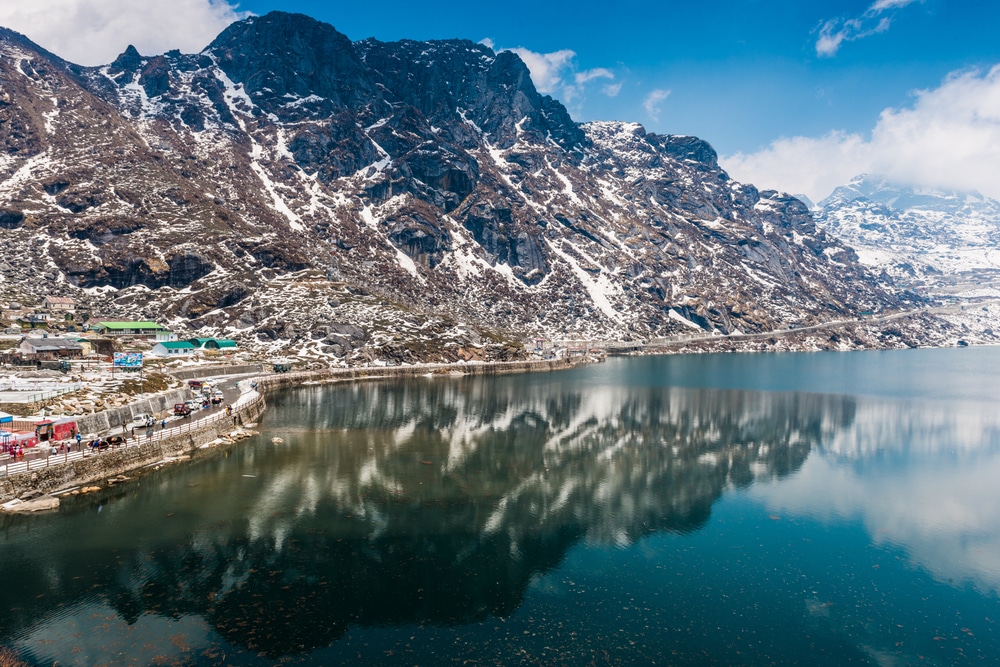
Tsango Lake or Changu Lake, is located on the north of the Nathu La Pass, and is a glacial lake in Sikkim. The lake is situated at an average elevation of 3780 meters above sea level. It falls in the restricted area and hence an inner line permit is required by Indians to visit this place. Foreign nationals are not permitted to visit this lake without special permission. The lake is about 1 km. Long, oval in shape, 15 meters deep and is considered sacred by the local people.
5. Himalayan Zoological Park
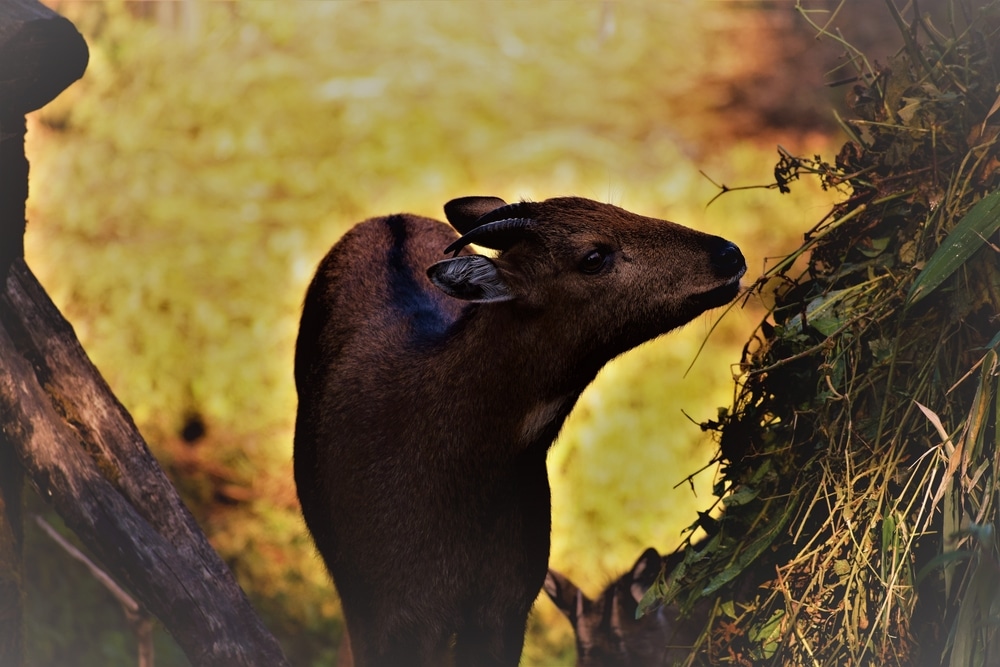
Although the Zoological Park doesn’t actually lie in the Territory of Sikkim, and is actually located in Darjeeling, is however only at a short distance of approximately 50 kilometres from Sikkim and is a must visit spot if you want to gander at the various fauna that this zoo houses. Also known as the Padmaja Naidu Himalayan Zoological Park or the Darjeeling zoo, the park was opened in 1958, and covers an area of 67.56 acre and is located at an altitude of approximately 7,000 meters above sea level, making it the largest ‘High-altitude zoo’ in India.
6. Rumtek Monastery
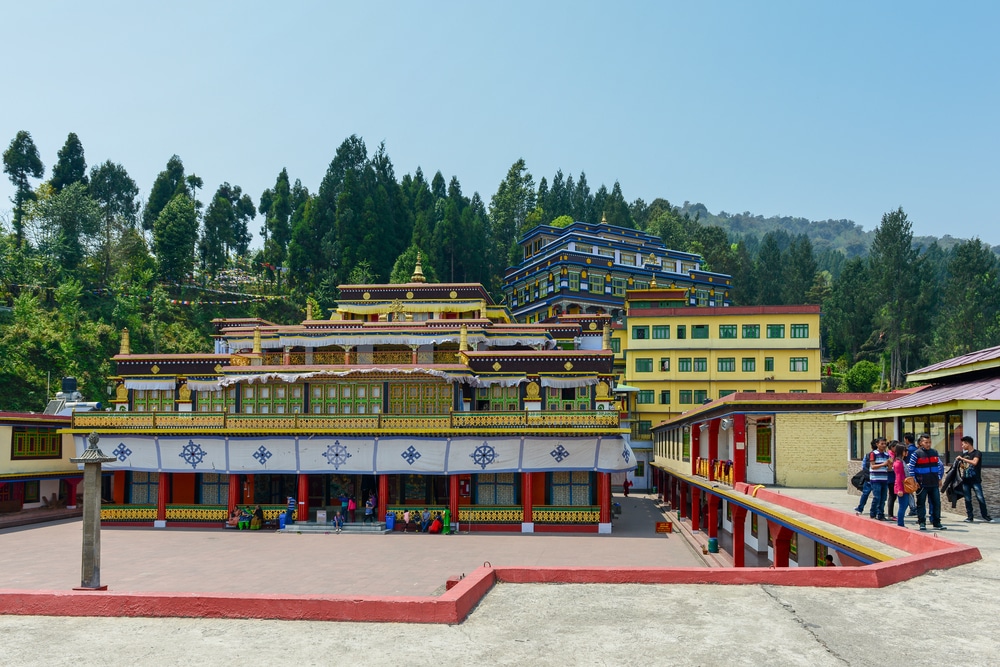
Rumtek Monastery was built in the 16th century around the same time as the other 2 monasteries established by the 9th Karmapa Wangchuk Dorje and was the main seat of the karma Kagyu lineage for some time and was eventually abandoned to ruins. When the 16th Karmapa arrived in Sikkim in 1959, he decided to rebuild the monastery as the site was considered highly auspicious.
7. Namchi
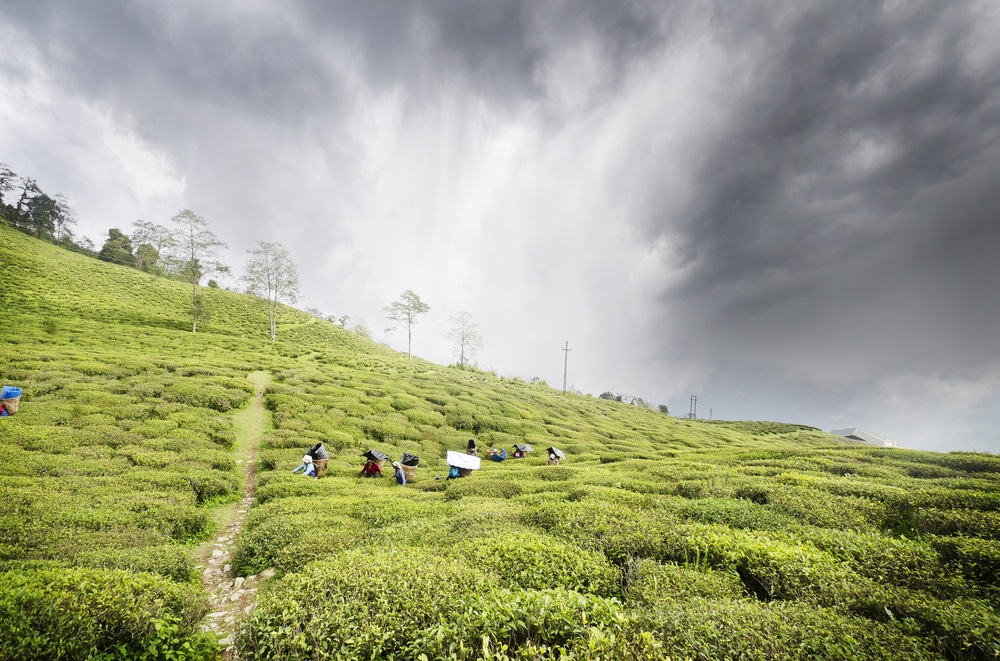
The capital of south Sikkim district, Namchi is located at an average elevation of 1315 meters above sea level. The area is fast growing into a tourist destination with its enormous potential for all round tourist activities. The Namchi monastery, Ralong monastery and Tendong Hill are important Buddhist pilgrimage centres. The world’s largest statue (at 118 feet) of the Buddhist Padmasambhava, also known as Guru Rinpoche, the patron saint of Sikkim, is on the Samdruptse hill (The Wish Fulfilling well) opposite Namchi and is a must visit.
8. Khecheopalri Lake
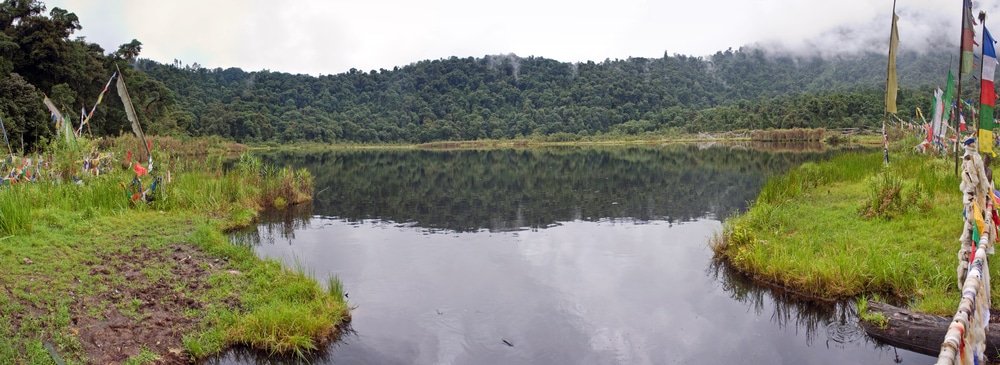
Located at an average elevation of 1,700 meters above sea level, Khecheopalri Lake is a sacred place for both Buddhists and Hindus and is situated in the Khecheopalri village in the west Sikkim district. The name of the lake ‘Khecheopalri’ was originally known as ‘Kha-chot-palri’ which means the heaven of Lord Padmasambhava. An interesting feature of the lake is that leaves are not allowed to float on the lake, which is ensured by the birds which industriously pick them up as soon as they drop into the lake surface.
9. Phodong Monastery
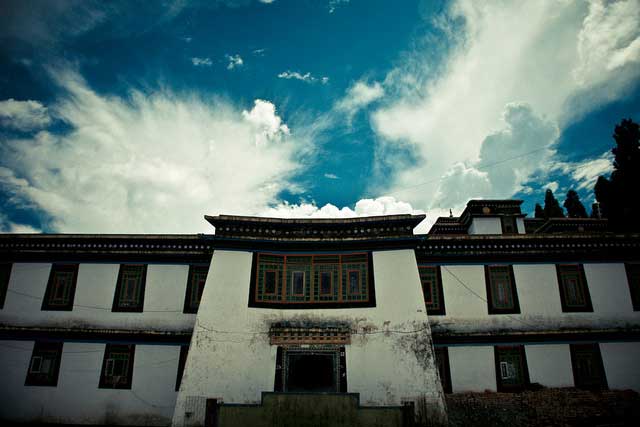
Along with the 2 other monasteries that belong to the Kagyu sect of Tibetan Buddhism, Phodong Monastery was founded by the 9th karmapa in the 18th century. However, the monastery was rebuilt in the 20th century, although the old mural paintings and frescoes were preserved.
10. Trekking at Mt. Kanchendzonga
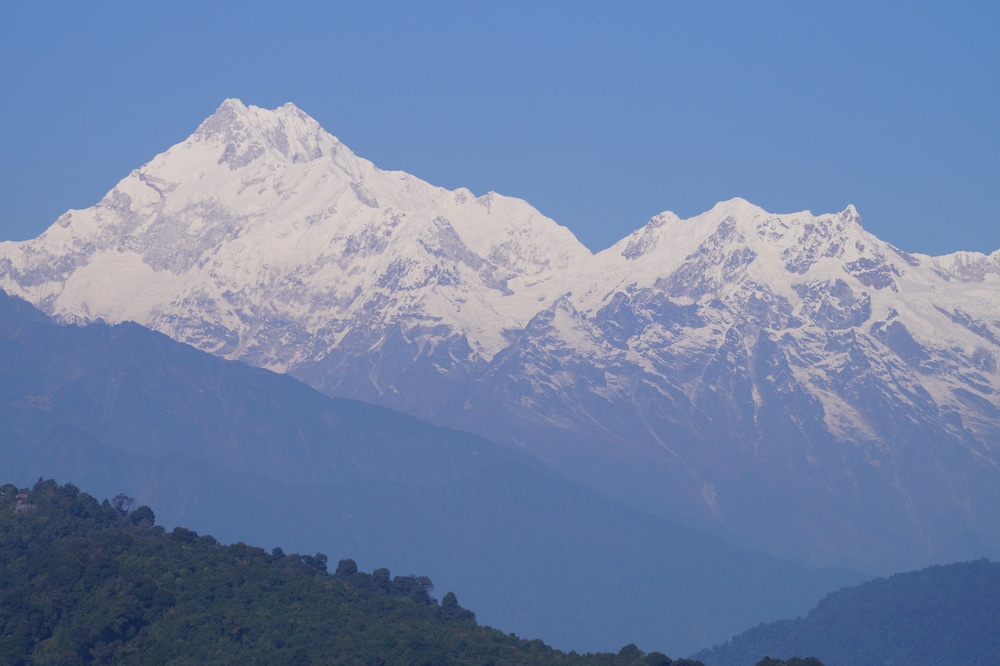
With a monolithic elevation of 8,568 meters above sea level, Mt. Kanchendzonga is the world’s 3rd highest peak and the highest peak in India. Located on the boundary between Sikkim and Nepal, the mountain is a trekker’s haven and is considered to be one of the most challenging trek spots. Apart from the aforementioned 10 places, Sikkim has plenty more things and places to explore and with its diverse climate and rich and unique cultural heritage and thus is a must visit.

